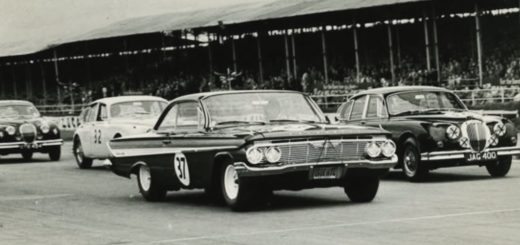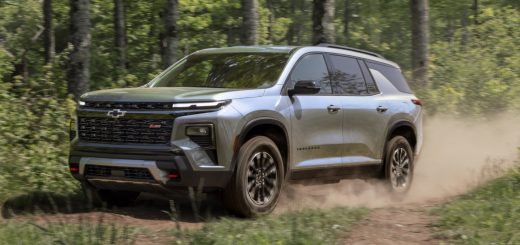There is always than meets the eye. That can be said for engineering, business and, specifically here, strategy. Chevrolet knows what it’s doing to ensure two successful frugal vehicles in its lineup, and Hybrid Cars has broken it down.
The reality is this: the 2016 Chevrolet Malibu Hybrid gets and estimated 47 mpg with a 1.8-liter four-cylinder hybrid setup. The 2016 Chevrolet Volt returns 42 mpg with its PHEV (partial hybrid electric vehicle) configuration. Many have asked, why would Chevrolet not give the 2016 Volt everything it could stuff into the car for the best fuel economy for a range-topping eco car?
That’s where the strategy comes into play.
Chevrolet notes the 2016 Malibu Hybrid was engineered and designed to be a formidable player among a highly-contested segment. The Honda Accord Hybrid returns 47 mpg, the Ford Fusion Hybrid will sits with 42 mpg and the Camry comes in close with 41 mpg.
The 2016 Malibu Hybrid wants to bring in the customer that isn’t ready for electric driving. Someone who can’t be bound by range anxiety, even if a backup gasoline engine is on hand. The 2016 Malibu Hybrid is for the consumer looking for optimal fuel economy. Period.
The 2016 Volt on the other hand is meant to cater to a completely different crowd. This consumer, as identified by Chevrolet, does not want to burn gasoline at all, doing everything in their power to stay within the Volt’s 53 mile electric range. As you can see, these are very different customers when viewed in this fashion.
The technicals of how Chevrolet has achieved greatly fuel economy in the 2016 Malibu Hybrid can be attributed to a host of new engineering, including the car’s new exhaust gas heat recovery. In the same of profitability, and strategy, these kinds of technologies were left out of the 2016 Volt.
Chevrolet won’t put all it has in one basket. A PHEV, a hybrid and an upcoming pure EV will cater to many different consumers. It’s all a part of that strategy concept.















Comments
I find it surprising that Chevy decided not to use the 1.4-liter Ecotec four-cylinder turbocharged engine that produces 153 horsepower and 177 foot-pounds of torque getting 40 miles per gallon on the highway with a new six-speed auto transmission in the 2016 Cruze; this engine mated to a 8-speed automatic in the Malibu combined with the hybrid module should push mileage to near that of Toyota’s Prius of 52mpg.
For one , the fourth-generation Prius is due out in a few weeks and gets over 55 MPG. The Plug-in Prius is due out six months later and will supposedly now go over 20 miles all-electric.
GM has masterfully stuffed some of Volt’s LG lithium batteries into Malibu and Plug-In CT-6 PHEV. It’s the next best thing to having these cars ride on a skateboard chassis ( invented by GM by-the-way ) as seen on Tesla’s Model S and X. Using Voltec parts on Malibu and CT-6 spreads costs out and makes a better gen2 Volt more affordable. This needs to continue on with hybrid CUV versions of Equinox, Traverse and TRAX, then contuing on up to Canyon, Colorado and Silverado.
Imagine the hit to Ford if GM offered a full sized pickup with 73MPGe! VIA Motors produces a GM PHEV conversion truck, but can only sell it for $80,000+. With economies of scale, GM could easily sell a VIA-like truck – lithium batteries fitting neatly between the frame rails and V-6 range extender for $60,000. Just think of the gas savings! Before anyone balks at $60,000 for a new truck – I was at the recent Seattle Auto Show and saw a Crew Cab F-150 with an MSRP of $63,850!!! Yes, people are now spending that kind of money on a new truck! Boggles the mind. Many are buying vehicles over 5,400 lbs and taking advantage of the business government tax break which now stands at ,000!
Some of the difference between Malibu Hybrid at 47MPG combined, and Volt is sheer weight. The Malibu is lighter than Volt due to Volt’s large 18.4 KWH T-pack. It’s packaging. Malibu buyers don’t mind a huge car – the new Malibu is only 2 inches or so shorter than Impala! To gain a sizable rear seat, Malibu’s weight is in steel. Volt’s weight is in it’s battery pack.
Put Volt’s T-Pack in Malibu and it would lose it’s spacious interior and gas mileage in CS mode would suffer largely. It’s been said that the added cost of GM’s new exhaust recirculation tech would be wasted on Volt due to it’s very small increase in efficiency. GM gained gas mileage in gen2 Volt over gen1 by using a much lighter ( aluminum block vs. iron ) and higher tech ( Atikinson Cycle – new-gen featured ) 1.5L 4 cylinder range extender.
In a perfect world, we would see a “50/50” Volt. Fifty MPG in range-extending gas mode, and 50 miles electric. We have the 53 miles of electric range which is fantastic. Wait until more people experience how quick, smooth, luxurious and quiet the new Volt is! It’s quicker than gen1 AND more efficient! People who make an effort will easily see 60 miles all-electric range in their Volts now, and less dropoff in winter. Hypermilers will see 50 MPG in CS range-extending mode, but normal drivers can at least see over 40MPG and ( gen2 ) ON REGULAR GAS!
Compromises and packaging challenges made – Malibu Hybrid with it’s giant back seat getting 47 MPG is amazing. I’ve said all along, GM should spread it’s Voltec technology throughout it’s product line as they have struggled to produce a competitive Hybrid line to Toyota’s HSD Camry and Highlander. Ford uses the same HSD hybrid system as Toyota in Fusion and Escape. Voltech is better. I hope to see Volt’s system in more sedans, CUVs and trucks ASAP.
* The business tax credit for vehicles over 5400lbs. is $25,000. Business owners are lobbying to get the tax credit back up to $100,000 where it was before this year.
Some thought the huge vehicle tax credit died along with all the negative exposure it got a few years back. It didn’t! Instead, it rolled along – people buying Tahoes, Escalades and Expeditions for their businesses with a full government payout! Last year, it was reduced to $25,000. Most likely, a party change in the White House and shakeup in Congress would see a return to the $100,000 freebie for gas guzzlers to businesses.